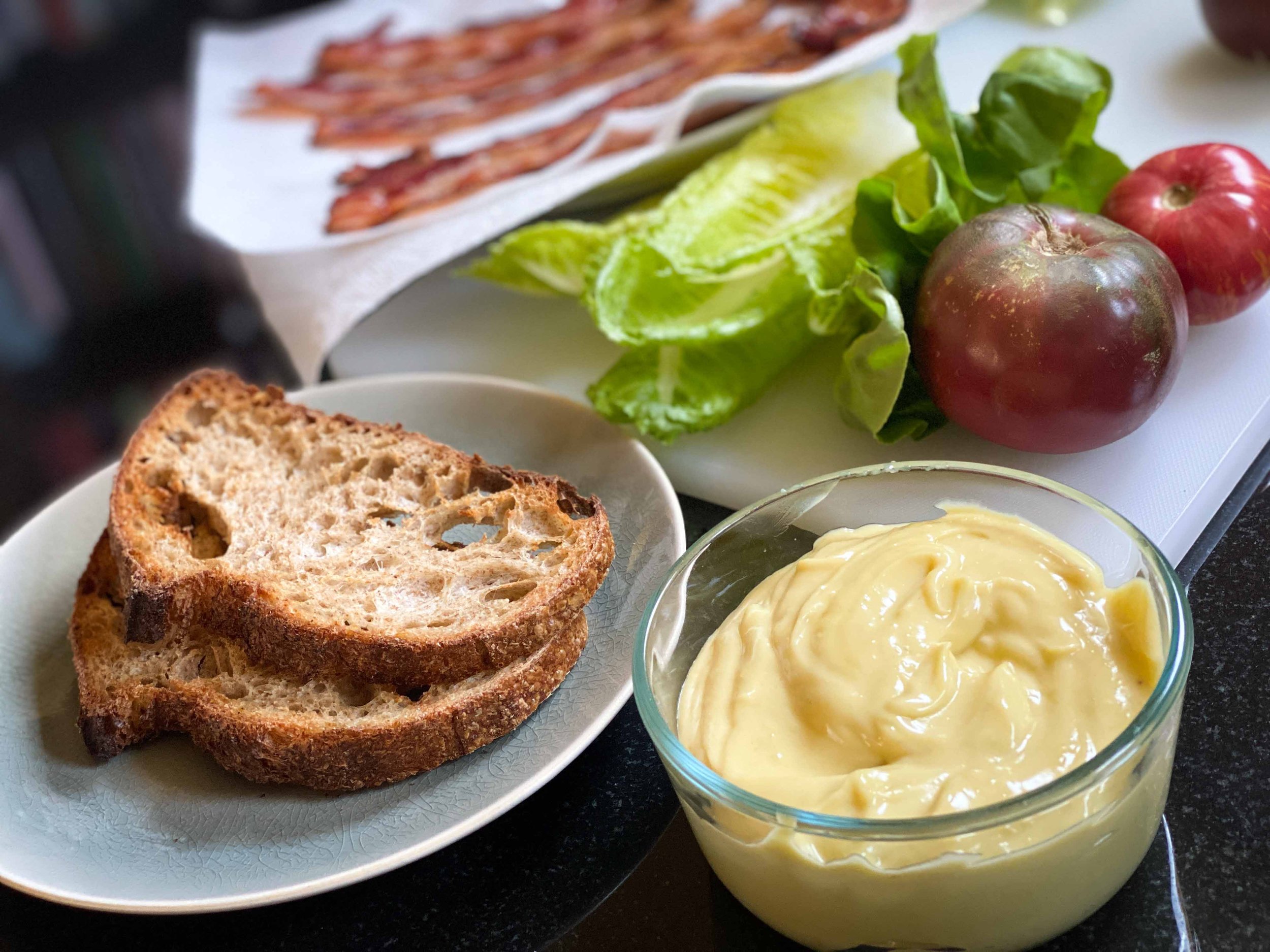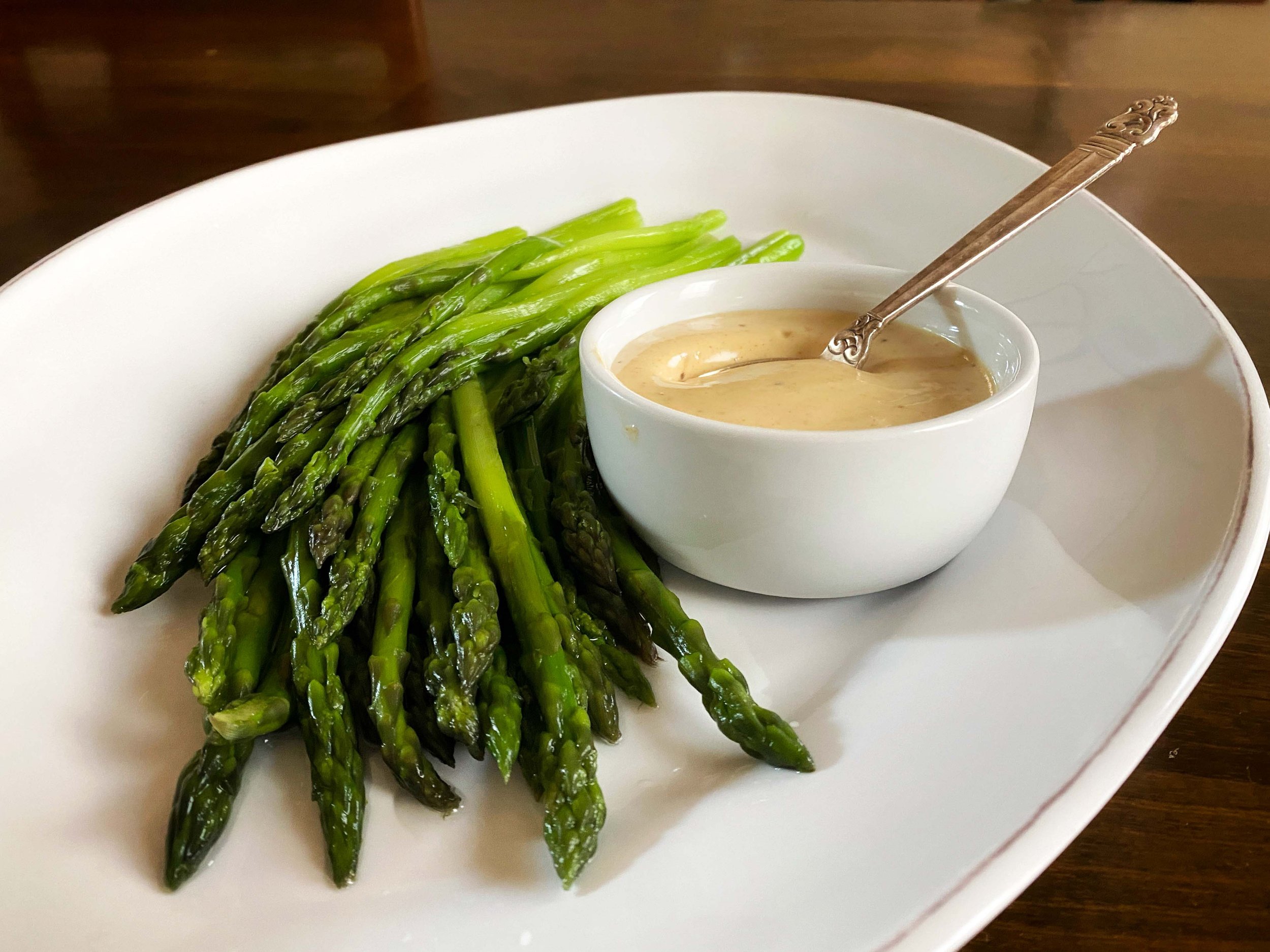By Leslie Brenner
In director Eric Bésnard’s film “Delicious,” released in the U.S. earlier this year (it’s “Délicieux” in French), a pivotal plot point revolves around mayonnaise.
The chef-protagonist, Pierre Manceron, pays a late-night visit to his ex-boss, the Duc du Chamfort, who had fired him months before because one of his courtiers objected to a dish. Chef Manceron finds the duke sitting miserably in his kitchen, not-enjoying a midnight snack of langoustines. “This is what I’m reduced to,” the duke says in subtitled French, joylessly spearing a langoustine. “I ingurgitate, but without enjoyment.” (OK, I would have translated that differently.)
“Good cooks are rare, Manceron,” the duke continues. “Your successor was a sauce spoiler. And the one that came after him could barely make a mayonnaise.” He looks away, wistful. “How the little things can evoke the greatest memories. Look at that,” he says, nodding toward his sad snack. “It’s hopeless. No balance, no invention, no harmony. Nothing.”
“May I?” says Manceron, reaching for a small bowl of oil. “This’ll take but a minute.” Into another bowl, he cracks an egg, pours in some oil and starts whisking with a small broom-like whisk. In two seconds, he has a beautiful mayonnaise — miraculously garnished with sliced chives.
The duke sticks his finger into the mayo, tastes. Closes his eyes, blissed-out. “And so you came to torture me?”
I won’t tell you where it all leads (and yes, it’s worth watching!), but the point is clear: There’s nothing like a great homemade mayo. And here’s the best part: It’s way easier to make than you might think. OK, maybe not quite as effortlessly as Manceron makes it happen. But easy enough that if you love it as much as I do, you might find yourself making it every week or two.
Homemade mayonnaise makes so many things so much better. A height-of-tomato-season BLT. A next-level tuna salad sandwich, using the best tuna packed in oil. Deviled eggs. Egg salad.
Or depart from American classics and try some French favorites, like Céleri Rémoulade — the salad of julienned celery root that’s a bistro classic.
Céleri Rémoulade — one of homemade mayo’s best party tricks
Or Macédoine de Légumes — a simple, parti-colored salad of diced and blanched carrots, haricots verts and turnips, plus peas, cloaked lusciously in good mayo.
Use your delicious homemade mayo straight-up for dipping leaves of boiled artichoke or dolloping onto poached shrimp, or whisk into it a bit of crème fraîche, paprika and sherry vinegar, and call it the best sauce ever invented for chilled asparagus.
Macédoine de Légumes - glamourous cafeteria food!
But wait — how do we achieve this?
J. Kenji López-Alt, of Serious Eats fame (now with The New York Times) has an ingenious method for making mayonnaise. A hand-blender creates a vortex that does all the work for you. Pour canola oil over a layer of egg yolk combined with lemon juice, mustard and water, submerge the immersion blender, turn it on, slowly pull it up through the ingredients and voilà: mayonnaise in an instant.
That’s even easier than Chef Manceron’s movie magic. However, there’s a little more to do if you want the result to be not just mayo, but delicious mayo. For that, you need olive oil for flavor. Unfortunately, you can’t include the olive oil in that blender jar; olive oil has a different molecular structure than canola oil does, and the vortex trick doesn’t reliably work with it. (Occasionally it does; often it “breaks” — that awful thing that happens when your beautifully thick mayo falls apart into what looks like a vinaigrette.) That’s why, after the super-easy hand-blender trick, López-Alt has you whisk in a lot of olive oil by hand. It’s not the end of the world, but it does take some muscle to whisk in a full cup.
I wanted to make the process a bit easier, and I also prefer mayo that’s richer than López-Alt’s. While I do like the 50-50 olive oil-to-flavorless-oil ratio he uses, I favor a mayonnaise with a higher ratio of egg yolk to oil. For that, I turned back to a chef from mayo’s birthplace.
Mayonnaise the French way
In late 2020, renowned Paris chef Jean-François Piège published a monumental book that ambitiously and impressively aimed to codify the canon of contemporary French cooking: Le Grand Livre de La Cuisine Française: Recettes Bourgeoises & Populaires. I got my hands on a copy last year when I was in Bordeaux and schlepped the 8.2 pound, 1,086 page tome back in my carry-on (yep, shoulda checked it — its weight nearly made me miss my tight connection at Charles De Gaulle!).
It was worth it — I’ve referred to it a ton. Including Piège’s recipe for Mayonnaise — in which he uses 8 egg yolks for a liter of oil, which is about 2 yolks per cup of oil — a ratio that tastes just right to me. He also uses a full 5 teaspoons of Dijon mustard per cup of mayo, and red wine vinegar rather than lemon juice. (The mammoth cookbook, in case you’re wondering, has yet to be translated into English.)
Taking that page from Piège, our Mayonnaise recipe offers more depth of flavor than López-Alt’s, while requiring 25 percent less hand-whisking. It’s as delicious as Piège's, and more easily achieved than López-Alt’s.
RECIPE: Our Favorite Mayonnaise (Immersion Blender Method)
Go make a batch — you won’t be sorry. Covered in the fridge, it keeps for two weeks — though with all its delectable applications, yours might not stretch that long.
If you enjoyed this story, you might like:
READ: “How to cook France’s favorite dish, something most Americans have never even heard of”
READ: “Family gift from the Great Confinement: the perfect, easy roast chicken”
READ: “Chef Daniel Boulud gives a humble French dish, hachis Parmentier, the royal treatment”
READ: “To make a traditional gratin dauphinois, back away from the cheese”
• • •
Want to receive our recipes in your in-box? Sign up for our free newsletter.





